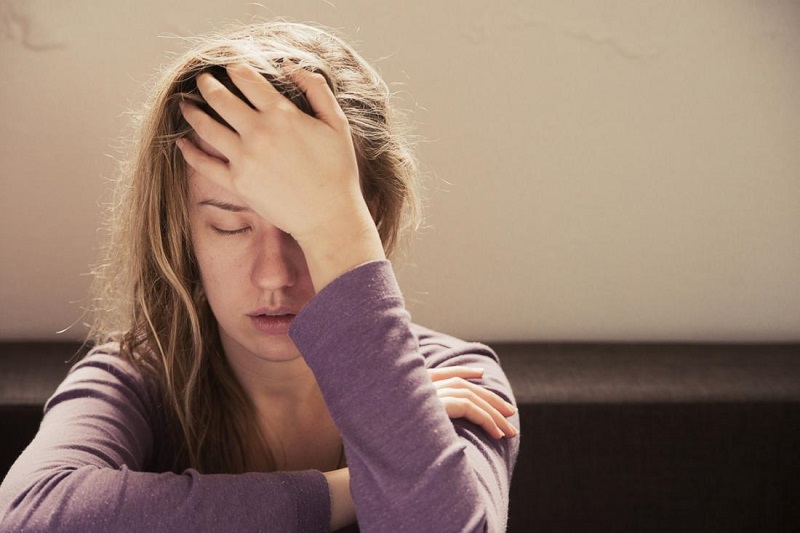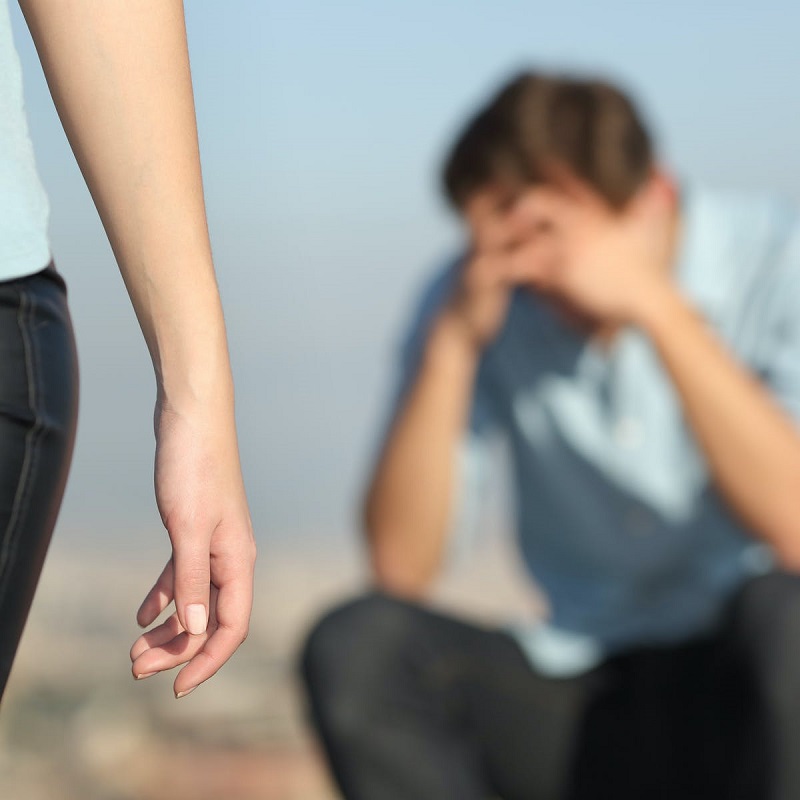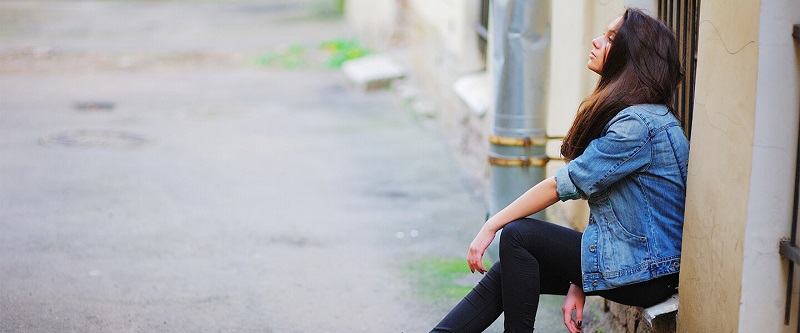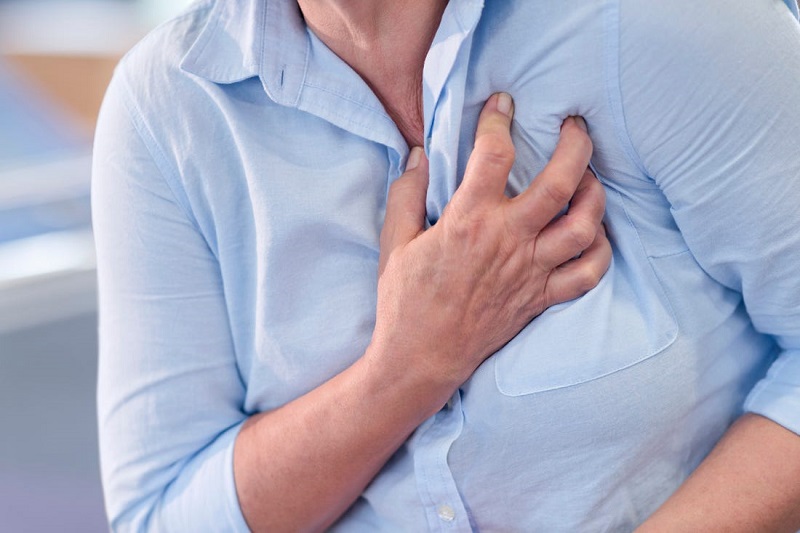Anxiety can manifest itself through physical discomforts that can worry you but have a solution for anxiety chest pain.
The pressure and stress we undergo on a day-to-day basis can generate both emotional and physical discomforts, which contribute to the wear and tear of our body and mental fatigue.
When this turns into anxiety, they drag us into a spiral of despair and lack of motivation to face routine, avoid performance in our work and lessen concern for our well-being.
When this anxiety worsens it can lead to other major health problems such as coronary heart disease, changes in blood pressure or accumulation of muscle tension. But above all, this may be the origin of the development of some mental disorders such as specific or generalized anxiety, panic attacks, and even depression.
Therefore, in this article, we will tell you everything you need to know about anxiety, the problems it causes, why your chest hurts when you are anxious and how to solve it.
What is anxiety?
In theory, anxiety responds to a natural adaptation mechanism that we all have, which keeps us alert to difficulties and provides the body with enough energy to be aware of all the possible scenarios that may compromise us and how we can solve them.
In general, this sensation diminishes when we have solved that problem that afflicts us, leaving the body exhausted and with a feeling of satisfaction. But anxiety is not only an adaptation mechanism. But it can also be classified as a personality trait, a symptom of some illness or a mental disorder.
Anxiety disorders
Anxiety becomes a personality disorder when it manifests itself constantly, intensely or excessively, the discomforts are aggravated throughout the body and affect different areas of a person’s development (intimate, interpersonal, work, social or academic ). Another way to recognize this disorder is when there are short but repetitive episodes of extreme anxiety, panic attacks or paralyzing and uncontrollable fears, which avoid having a proper routine.
Anxiety disorders can be found in DSM 5 (Diagnostic and Statistical Manual of Mental Disorders) such as the following.
1. General anxiety
Anxiety is known to occur at any time and for any situation, it can also happen in the opposite case, that anxiety occurs for no apparent reason during the day.
2. Specific anxiety
In the opposite case, there is the anxiety that you can feel about something in particular, generally in facing this situation or being afraid of solving it.
3. Separation anxiety
It occurs in young children when they have excessive and sometimes senseless anxiety. Being under the situation of separation from parents or the withdrawal of a figure close to them.
4. Selective mutism
It also happens in children and is characterized by an inability to speak in situations that are very difficult for them and that they prefer to avoid.
5. Panic or panic disorder
It consists of short but repetitive and constant episodes of fear, phobia or maximum anxiety. Manifesting through shortness of breath or pounding and fear of recurrence.
6. Agoraphobia
It is anxiety caused by the fear of being exposed in open places and where the person feels ashamed, afraid, trapped or suffocated. So they try to avoid them.
7. Social anxiety
Also known as social phobia, it refers to the levels of anxiety caused by rejection or fear of facing social situations and people because they are thought to cause harm.
8. Specific phobias
It refers to an extreme and sometimes irrational fear of something specific. Such as an animal or a situation you prefer to avoid. And whose exposure to this causes anxiety.
9. Anxiety due to illness
In this, the symptoms of anxiety (exhaustion, physical discomfort, mental fatigue, palpitations, exhaustion, or shortness of breath) are caused by illness.
Why does your chest hurt when you are anxious?
One of the most characteristic and noticeable symptoms of anxiety is the manifestation in physical discomforts, where the chest pain is the most common and is accompanied by a feeling of suffocation, chest tightness, hyperventilation, palpitations, dizziness, excessive tiredness, and pressure. in the head. Being a notable and annoying problem for the person who experiences it, has it ever happened to you?
Ways to recognize anxiety chest pain
This chest pain is due to somatization of anxiety (i.e. its externalization) and usually manifests during a panic or stressful situation. People who experience it often describe it as a throbbing pain that spreads throughout the torso.
It is a pain that can last for several minutes but does not continue beyond it. And appears from the beginning of the state of anxiety to its end, where it decreases. It does not increase or stop if we do different exercises, efforts or physical techniques.
Many tend to confuse this difficulty with a cardiovascular problem. But you can differentiate it because the latter is characterized by pains in a certain point of the chest and arm, while, due to anxiety, it spreads throughout the torso and no specific area is identified.
What causes anxiety chest pain?
As already mentioned, it is due to somatization caused by an episode of anxiety. That is, it is how the organism manifests that there is an overwhelming problem for the person who is affecting it in general.
But in itself, these discomforts appear in themselves, by the activation of the sympathetic nervous system, due to the high adrenaline and cortisol discharges. Bringing the body into a state of high and constant energy to react to any stimulus that causes concern.
With this activation, plus the uncontrollable feeling of continuous anxiety, they generate considerable muscular tension, which is the cause of physical pain. Therefore, chest pain is about the muscular pressure and tension of the torso, as well as the rest of the body.
Ways to alleviate and decrease anxiety
It is very common for people to have anxiety at certain times in life. Or mild panic attacks in the face of a very overwhelming and stressful situation. But, some people can suffer anxiety constantly due to any adversity in their routine.
Therefore, it is important to mention some ways to alleviate and decrease anxiety in everyday life.
1. Psychological treatment
It is always recommended to attend psychological therapy when you have constant feelings of insecurity or mistrust in your abilities to solve problems when stress overwhelms you and you cannot handle it or it is causing difficulties in your performance and relationships.
In psychotherapeutic work, the specialist will give you the best tools to rebuild your confidence. Reinforce your self-esteem, have alternatives to resolve any conflict appropriately and activities to return to normality.
2. Pharmacological treatment
This is carried out when the person is immersed in a serious anxiety disorder that affects all areas of his life and cannot control it. Treatment is performed by a psychiatrist and works in conjunction with a psychotherapist to find adaptive tools.
Anxiolytic drugs that decrease brain arousal and contribute to the relaxation of the body are indicated.
3. Breathing work
This is ideal to calm the symptoms of pain and pressure in the chest since you manage to relax the muscles and clear the mind of worries. These techniques can be found on the web, be directed by your therapist or through the practice of activities such as meditation, Taichi or yoga.
4. Relaxing activities
Always look for activities that reduce the stress of your day today. That you can enjoy, that help nourishes your brain and distract you. You can choose physical exercises, learn new skills, meet friends, walk your dog. Or take a break with a hot cup of tea.
5. Training habits
With these habits, you can train your mind to solve different difficulties and thus you will see that you have the ability to face any obstacle and find a resolution if you are focused. For this, you can get used to reading mystery novels, look for mathematical problems to solve or download games of mental agility.
6. Get informed
You must be aware of the problem that is causing you discomfort and difficulties in your daily life so that you can solve it effectively. Therefore, look for all the necessary information about anxiety and pay attention to the situations in your life that trigger it. In this way, you can have control over your anxiety.
Of course, avoid information. Focus only on having a global vision of your problem. But don’t go beyond what is necessary because that can activate a new state of anxiety.
7. Use creative tools
To solve all those conflicts or problems that seem to be beyond you must think ‘out of the box’ since sometimes the solution requires creativity, so why not use creative tools? such as concept maps, mind maps, DAD poems, breakdowns, a solution notebook, drawings, writing your problems, etc.
You may also like to read- https://rainbowfrog.co.uk/



